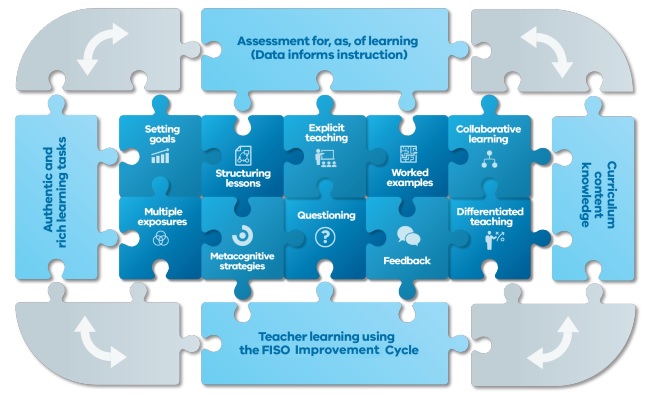
Maximize Your Grading Efforts With These High-Impact Marking Strategies
20th March 2023
Did you know? According to the Teacher Wellbeing Index 2023, 78% of education staff reported feeling stressed at work (a 3% increase from 2022). Many spend more than 10 hours a week on assessments. This shows that while grading is vital for student growth, it continues to be one of the most challenging responsibilities for educators.
Are you overwhelmed with stacks of assignments but short on time? You’re not alone.
Grading is essential for tracking progress and giving meaningful feedback, but without smart strategies, it can quickly lead to burnout.
By adopting high-impact, time-saving approaches, teachers can grade more efficiently while still maintaining quality feedback.
High Impact Time-Saving Grading Strategies For Teachers

Here are the latest strategies that educators are using to balance efficiency and effectiveness:
1. Use Rubrics (With AI Support)
Rubrics remain one of the most reliable grading tools. But in today’s digital era, many teachers pair them with AI-powered grading assistants. These tools highlight key areas based on your rubric, making the process faster and more consistent.
Why it works:
- Provides clear expectations for students.
- Reduces subjective bias in grading.
- Saves time by standardizing evaluation across multiple assignments.
Tip: Share the rubric with students before they begin. Research shows students who use rubrics for self-checking improve performance by 18% compared to those who don’t.
2. Peer Grading with Digital Tools
Peer assessment is more effective than ever thanks to secure online platforms that anonymize student work and provide structured feedback templates.
Why it works:
- Saves teachers significant time.
- Encourages collaboration and critical thinking.
- Provides students with diverse perspectives.
Tip: Always provide a checklist or mini-rubric for students to follow—this ensures feedback is constructive and aligned with learning goals.
3. Leverage Technology and AI Feedback
With AI integration, teachers can now automate parts of grading without losing the human touch. Tools can scan essays for grammar and structure, or instantly score math/science problems, leaving teachers free to focus on deeper feedback.
Why it works:
- AI speeds up repetitive tasks.
- Students receive quicker feedback.
- Teachers can dedicate more time to one-on-one interventions.
According to many report, over 54% of schools now use AI-assisted grading tools to reduce workload and improve feedback turnaround.
4. Incorporate Self-Assessment & Reflection
Encouraging students to evaluate their own work builds responsibility and reduces grading pressure. Modern platforms allow students to record video reflections or submit digital journals alongside assignments.
Why it works:
- Students become more independent learners.
- Teachers spend less time on minor corrections.
- Builds critical thinking and metacognition.
Tip: Provide students with reflective prompts (e.g., “What part of this assignment challenged you most?”) to guide self-assessment effectively.
5. Grading Conferences (In-Person or Online)
One-on-one grading meetings, whether in person or via video call, are gaining popularity because they provide personalized, impactful feedback. Teachers spend less time writing extensive comments and instead engage in meaningful dialogue.
Why it works:
- Saves time compared to long written feedback.
- Builds stronger teacher-student relationships.
- Helps students understand feedback better and set clear goals.
Tip: Limit each conference to 5–7 minutes to remain efficient while still being effective.
6. Batch Feedback for Common Issues
Instead of repeating the same comments on dozens of assignments, teachers now use batch feedback. Record short audio or video notes for common mistakes and share them with the whole class.
Why it works:
- Saves hours of repetitive commenting.
- Provides consistency across feedback.
- Makes feedback more engaging for students.
Work Smart, Not Hard
The key to efficient grading is not about cutting corners but about choosing strategies that maximize impact while saving time. As an educator, you know your students best—adapt these strategies to fit your classroom needs and teaching style.
There’s no one-size-fits-all solution, but combining rubrics, AI tools, peer feedback, and student reflection can significantly reduce stress while enhancing learning outcomes.
To master innovative teaching practices and learn modern assessment techniques, consider enrolling in an online International Teaching Diploma Course. These programs equip teachers with research-backed methodologies to manage grading, feedback, and classroom instruction more effectively.
Frequently Asked Questions (FAQ)
1. How can teachers reduce grading stress?
Teachers can use rubrics, AI-assisted tools, peer feedback, and self-assessment to cut grading time by up to 40% while still delivering quality feedback.
2. Is AI grading reliable?
AI grading tools are highly effective for repetitive tasks like grammar checks, math problems, or formatting. However, teachers should always provide human oversight for critical thinking and creativity-based tasks.
3. What are the benefits of peer grading?
Peer grading encourages collaboration, helps students understand assessment criteria, and saves teacher time. With proper guidelines, it improves both learning and efficiency.
4. Does self-assessment really work for students?
Yes. Research shows that students who regularly self-assess demonstrate improved independence, metacognition, and academic performance. It also reduces teachers’ workload.
5. How do grading conferences save time?
Instead of writing lengthy comments, short one-on-one sessions allow teachers to provide focused feedback and clarify misunderstandings quickly, making the process more impactful.
6. Which grading strategy is best for large classrooms?
For large classes, rubrics, batch feedback, and technology-based tools are the most efficient strategies. They ensure consistency while handling high volumes of assignments.
7. How can teacher training improve grading practices?
Professional courses, such as an online International Teaching Diploma Course, equip teachers with innovative assessment techniques and tools that balance efficiency with effectiveness.
Written By : Victoria Lewis




